Written by MIKE STOBBE
February is usually the peak of flu season, with doctors’ offices and hospitals packed with suffering patients. But not this year.
Flu has virtually disappeared from the U.S., with reports coming in at far lower levels than anything seen in decades.
Experts say that measures put in place to fend off the coronavirus — mask wearing, social distancing and virtual schooling — were a big factor in preventing a “twindemic” of flu and COVID-19. A push to get more people vaccinated against flu probably helped, too, as did fewer people traveling, they say.
Another possible explanation: The coronavirus has essentially muscled aside flu and other bugs that are more common in the fall and winter. Scientists don’t fully understand the mechanism behind that, but it would be consistent with patterns seen when certain flu strains predominate over others, said Dr. Arnold Monto, a flu expert at the University of Michigan.
Nationally, “this is the lowest flu season we’ve had on record,” according to a surveillance system that is about 25 years old, said Lynnette Brammer of the U.S. Centers for Disease Control and Prevention.
Hospitals say the usual steady stream of flu-stricken patients never materialized.
At Maine Medical Center in Portland, the state’s largest hospital, “I have seen zero documented flu cases this winter,” said Dr. Nate Mick, the head of the emergency department.
Ditto in Oregon’s capital city, where the outpatient respiratory clinics affiliated with Salem Hospital have not seen any confirmed flu cases.
“It’s beautiful,” said the health system’s Dr. Michelle Rasmussen.
The numbers are astonishing considering flu has long been the nation’s biggest infectious disease threat. In recent years, it has been blamed for 600,000 to 800,000 annual hospitalizations and 50,000 to 60,000 deaths.
Across the globe, flu activity has been at very low levels in China, Europe and elsewhere in the Northern Hemisphere. And that follows reports of little flu in South Africa, Australia and other countries during the Southern Hemisphere’s winter months of May through August.
The story of course has been different with coronavirus, which has killed more than 500,000 people in the United States. COVID-19 cases and deaths reached new heights in December and January, before beginning a recent decline.
Flu-related hospitalizations, however, are a small fraction of where they would stand during even a very mild season, said Brammer, who oversees the CDC’s tracking of the virus.
Flu death data for the whole U.S. population is hard to compile quickly, but CDC officials keep a running count of deaths of children. One pediatric flu death has been reported so far this season, compared with 92 reported at the same point in last year’s flu season.
“Many parents will tell you that this year their kids have been as healthy as they’ve ever been, because they’re not swimming in the germ pool at school or day care the same way they were in prior years,” Mick said.
Some doctors say they have even stopped sending specimens for testing, because they don’t think flu is present. Nevertheless, many labs are using a CDC-developed “multiplex test” that checks specimens for both the coronavirus and flu, Brammer said.
More than 190 million flu vaccine doses were distributed this season, but the number of infections is so low that it’s difficult for CDC to do its annual calculation of how well the vaccine is working, Brammer said. There’s simply not enough data, she said.
That also is challenging the planning of next season’s flu vaccine. Such work usually starts with checking which flu strains are circulating around the world and predicting which of them will likely predominate in the year ahead.
“But there’s not a lot of (flu) viruses to look at,” Brammer said.
Related Stories
‹
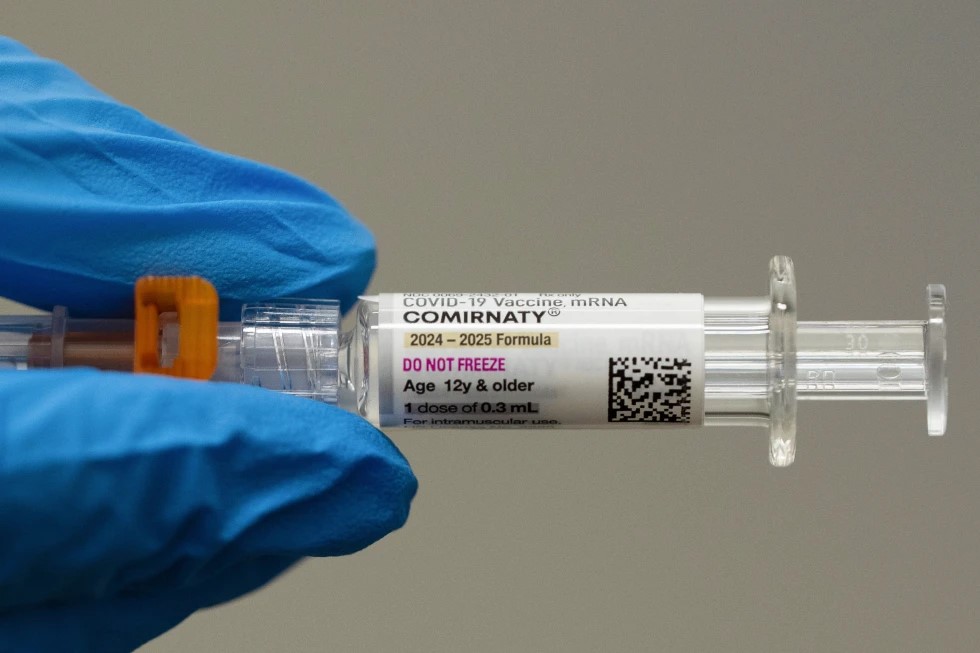
Got the Sniffles? Here’s What To Know About Summer Colds, COVID-19 and MoreFederal data released Friday shows COVID-19 is trending up in many parts of the country, with emergency department visits up among people of all ages.
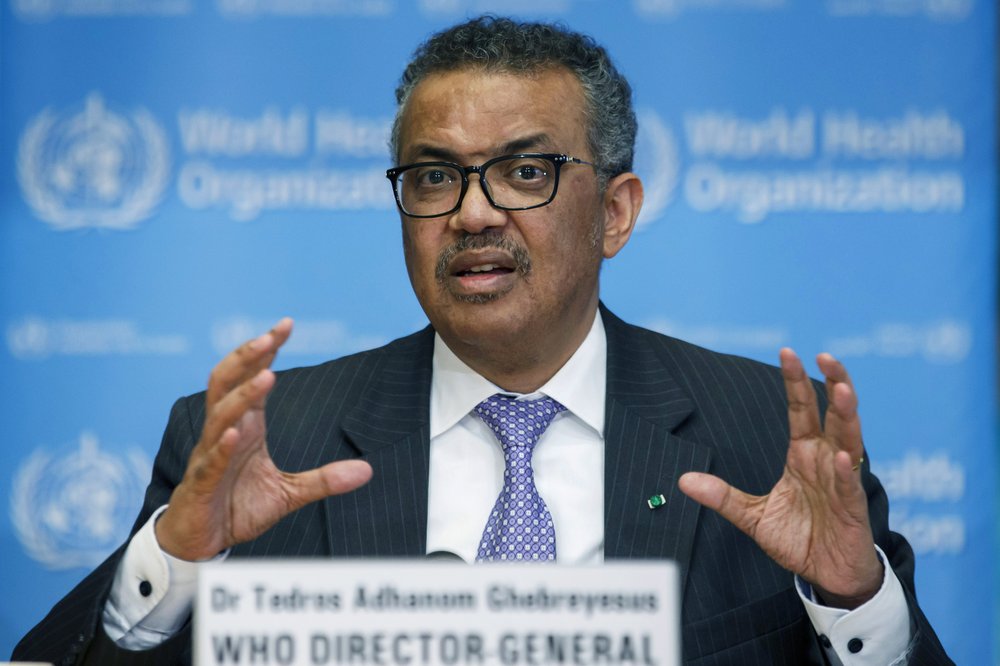
WHO Downgrades COVID Pandemic, Says It’s No Longer EmergencyWritten by MARIA CHENG and JAMEY KEATEN The World Health Organization said Friday that COVID-19 no longer qualifies as a global emergency, marking a symbolic end to the devastating coronavirus pandemic that triggered once-unthinkable lockdowns, upended economies worldwide and killed at least 7 million people worldwide. WHO first declared COVID-19 to be an emergency more […]
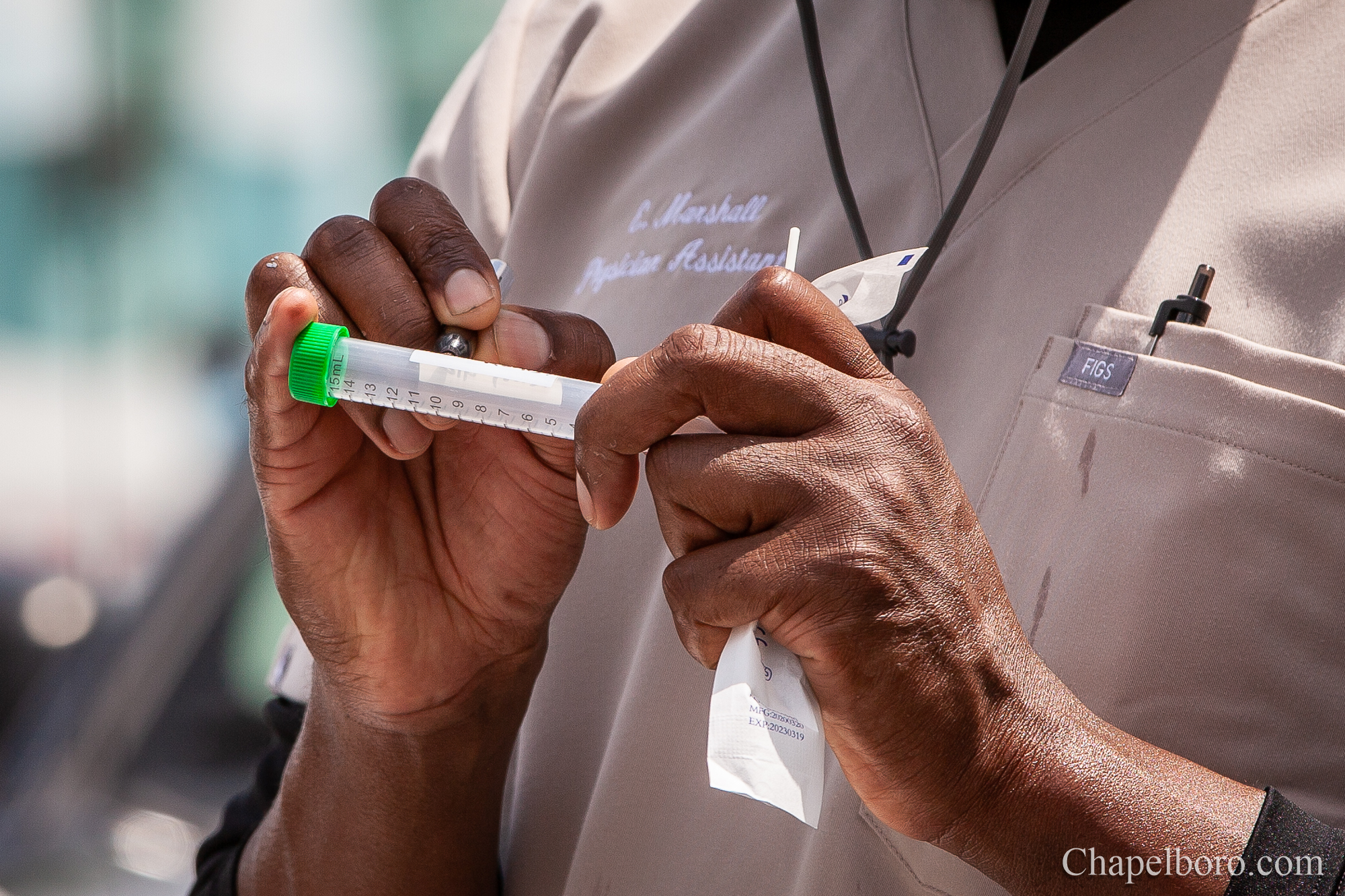
Orange County Ends COVID-19 Testing Services After Nearly 3 YearsAfter nearly three years of offering PCR tests for COVID-19, the Orange County Health Department has officially halted its testing services.

Bus Delays Expected for CHCCS Community After 25 Staffers Call Out SickChapel Hill-Carrboro City Schools students and families who rely on school buses will likely experience an influx of delays after more than two dozen staff members are out due to COVID-19 protocols. The district shared an alert on Friday afternoon, telling families that several of its bus drivers recently tested positive for the virus, felt […]
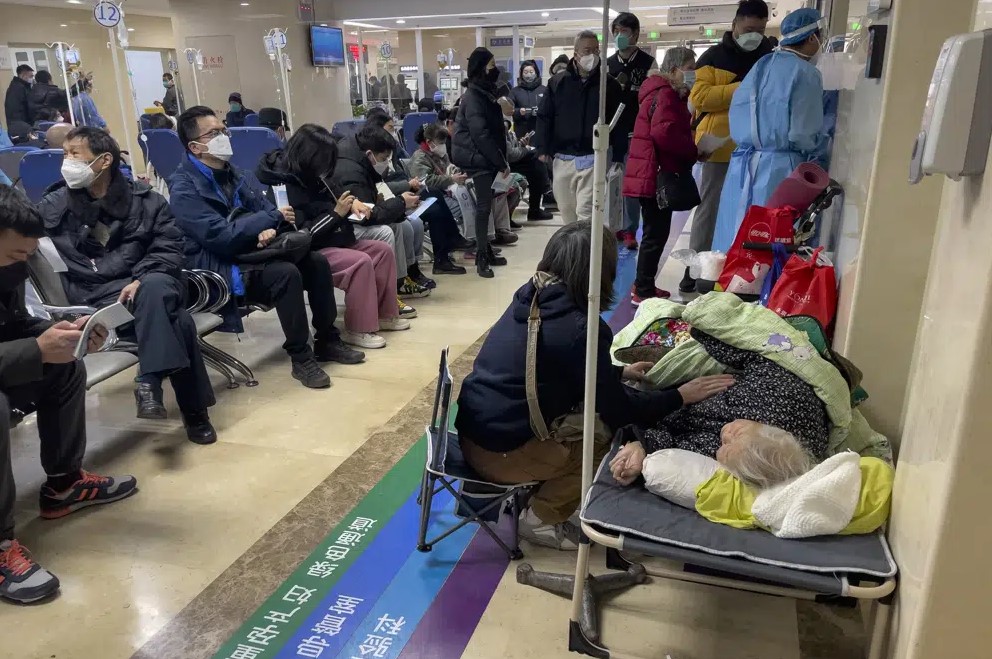
Beds Run Out at Beijing Hospital as COVID-19 SpreadsWritten by ANDY WONG and KEN MORITSUGU Patients, mostly older people, lay on stretchers in hallways or took oxygen while sitting in wheelchairs as a COVID-19 outbreak stretched public health facilities’ resources in China’s capital Beijing, even after its reported peak. The Chuiyangliu hospital in the city’s east was packed Thursday with newly arrived patients. […]

Police Seize on COVID-19 Tech to Expand Global SurveillanceWritten by GARANCE BURKE, JOSEF FEDERMAN, HUIZHONG WU, KRUTIKA PATHI and ROD McGUIRK Majd Ramlawi was serving coffee in Jerusalem’s Old City when a chilling text message appeared on his phone. “You have been spotted as having participated in acts of violence in the Al-Aqsa Mosque,” it read in Arabic. “We will hold you accountable.” […]
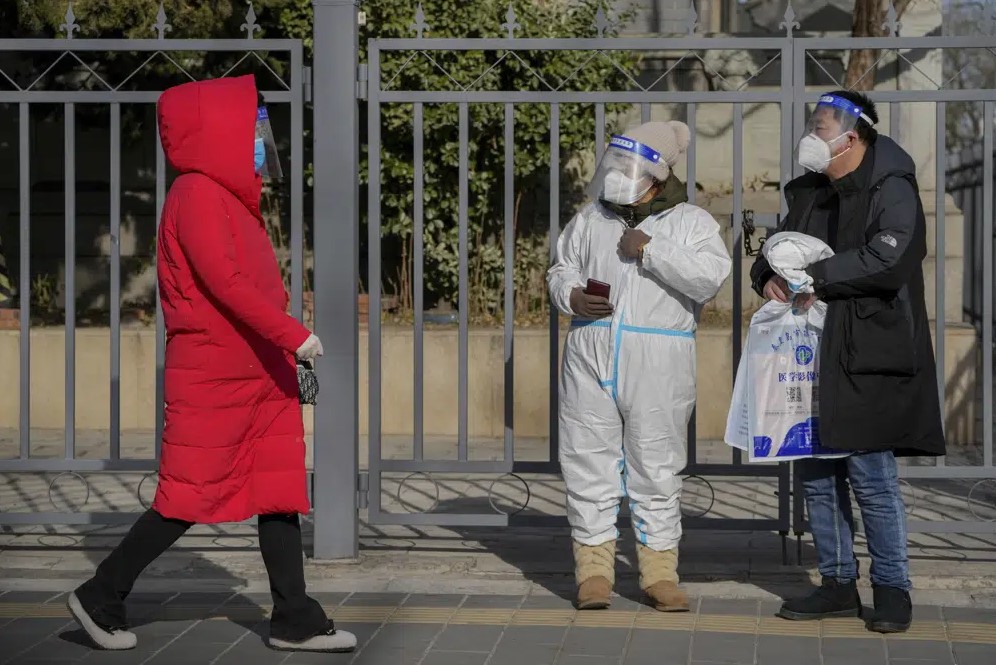
A Week Into China’s Easing, Uncertainty Over Virus DirectionWritten by DAKE KANG A week after China dramatically eased some of the world’s strictest COVID-19 containment measures, uncertainty remained Thursday over the direction of the pandemic in the world’s most populous nation. While there are no official indications yet of the massive surge of critically ill patients some feared, social media posts, business closures and other […]
![]()
China Eases Anti-COVID Measures Following ProtestsWritten by JOE McDONALD China rolled back rules on isolating people with COVID-19 and dropped virus test requirements for some public places Wednesday in a dramatic change to a strategy that confined millions of people to their homes and sparked protests and demands for President Xi Jinping to resign. The move adds to earlier easing that […]
![]()
Chinese Users Play Cat-and-Mouse With Censors Amid ProtestsWritten by ZEN SOO Videos of hundreds protesting in Shanghai started to appear on WeChat on Saturday night. Showing chants about removing COVID-19 restrictions and demanding freedom, they would stay up only a few minutes before being censored. Elliot Wang, a 26-year-old in Beijing, was amazed. “I started refreshing constantly, and saving videos, and taking screenshots […]
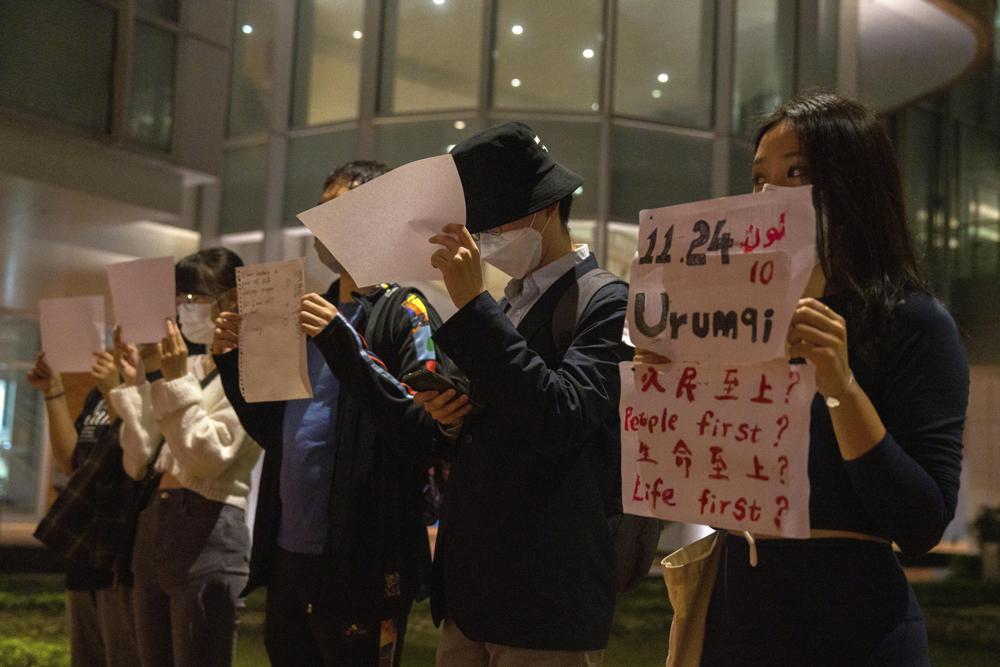
Students Sent Home, Police on Patrol as China Curbs ProtestsWritten by JOE McDONALD, DAKE KANG and HUIZHONG WU Chinese universities sent students home and police fanned out in Beijing and Shanghai to prevent more protests Tuesday after crowds angered by severe anti-virus restrictions called for leader Xi Jinping to resign in the biggest show of public dissent in decades. Authorities have eased some controls after demonstrations […]
›










